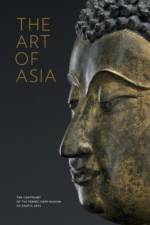av Gyorgyi Fajcsak
627
In the volume published in connection with the exhibition, the chapters on Mongolian material cultural artefacts in Hungary are divided into four main thematic sections. The four chapters that make up the first thematic section cover the history of the intellectual and material heritage of academic and diplomatic relations between Hungary and Mongolia. Attila Rákos provides a summary of Hungarian expeditions, while Gergely Csiky focuses on Hungarian archaeological excavations in Mongolia. Krisztina Teleki recounts the stories of Hungarians who travelled through Mongolia having escaped from prisoner-of-war camps in Siberia in the 1920s, and Tímea Windhoffer focuses on Mongolian diplomatic gifts that became part of public collections in the context of state visits in the second half of the 20th century. Following in the footsteps of eminent scholars and their outstandingly important research topics, the four chapters that form the second thematic section explore research undertaken by Hungarian scholars in, or in relation to, Mongolia. The chapters proceed in chronological order. Györgyi Fajcsák discusses the collecting work carried out by Zoltán Felvinczi Takács, the first director of the Ferenc Hopp Museum of Asiatic Arts, and the establishment of the archaeological collection associated with the nomads living in China's northern borderlands. Tímea Windhoffer examines Lajos Ligeti's travels in Inner Mongolia in light of the artefacts donated to the Ferenc Hopp Museum. Gábor Wilhelm focuses on Vilmos Diószegi's field research in the 1960s in relation to shamanism as well as his collecting work, while on the basis of materials collected during expeditions under her leadership, Ágnes Birtalan summarises the material culture of the Mongolian nomads. The third thematic thematic section presents some of the characteristic aspects of Mongolian Buddhist art and the related groups of objects in the collection of the Ferenc Hopp Museum of Asiatic Arts. Alice Sárközi describes the iconography of Tibetan-Mongolian Buddhist altars, while Ágnes Birtalan presents the domestic altars found in the yurts. Zsolt Szilágyi provides an introduction to the history of the Mongolian Jebtsundambas and their cultural-historical role, while in a chapter republished in the present volume, Judit Vinkovics discusses some of the most important Mongolian artefacts in Hungary, the objects associated with Dzanabadzar and his followers, held in the Ferenc Hopp Museum. Krisztina Teleki examines the depictions and sacred texts of Sridevi, the Buddhist female protector deity, in the collection of the Ferenc Hopp Museum, and, based on an offering text, Tímea Windhoffer traces the iconography of depictions of Vaisrava?a. Finally, József Végh demonstrates the relationships between individual elements of Mongolian monastic art in light of the gcod rite. The fourth and final thematic section of the volume contains chapters on historical photographic images taken in Mongolia. Zoltán Bereczki introduces photographs originating from Lajos Ligeti's expedition to Inner Mongolia, while József Végh discusses the Mongolian photographs taken in 1959 and 1972 by Miklós Rév. The descriptions and details of the artefacts held in the Mongolian Collection of the Ferenc Hopp Museum, which are used to illustrate the individual chapters in the different thematic sections, were prepared by the collection's curator, Tímea Windhoffer. The volume ends with an Appendix, which contains a separate bibliography, compiled by Gergely Csiky, of archaeological research carried out by Hungarians in Mongolia.



